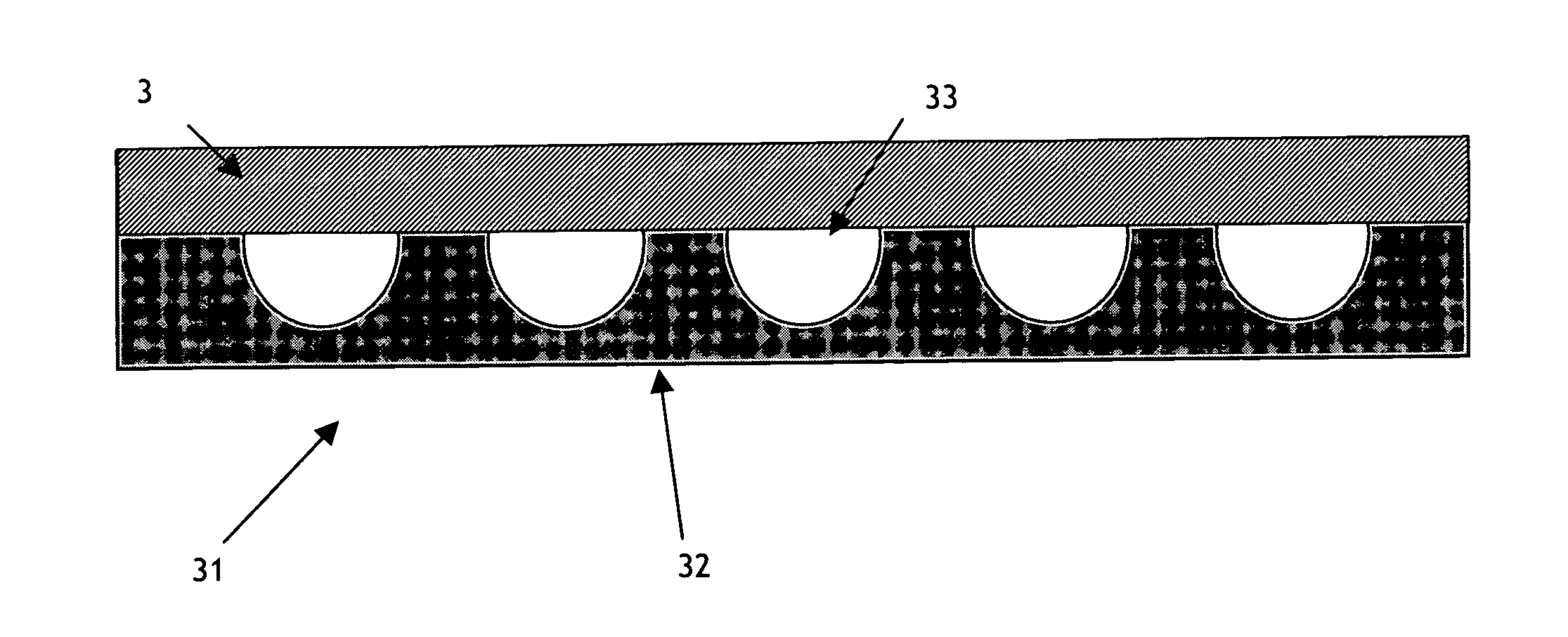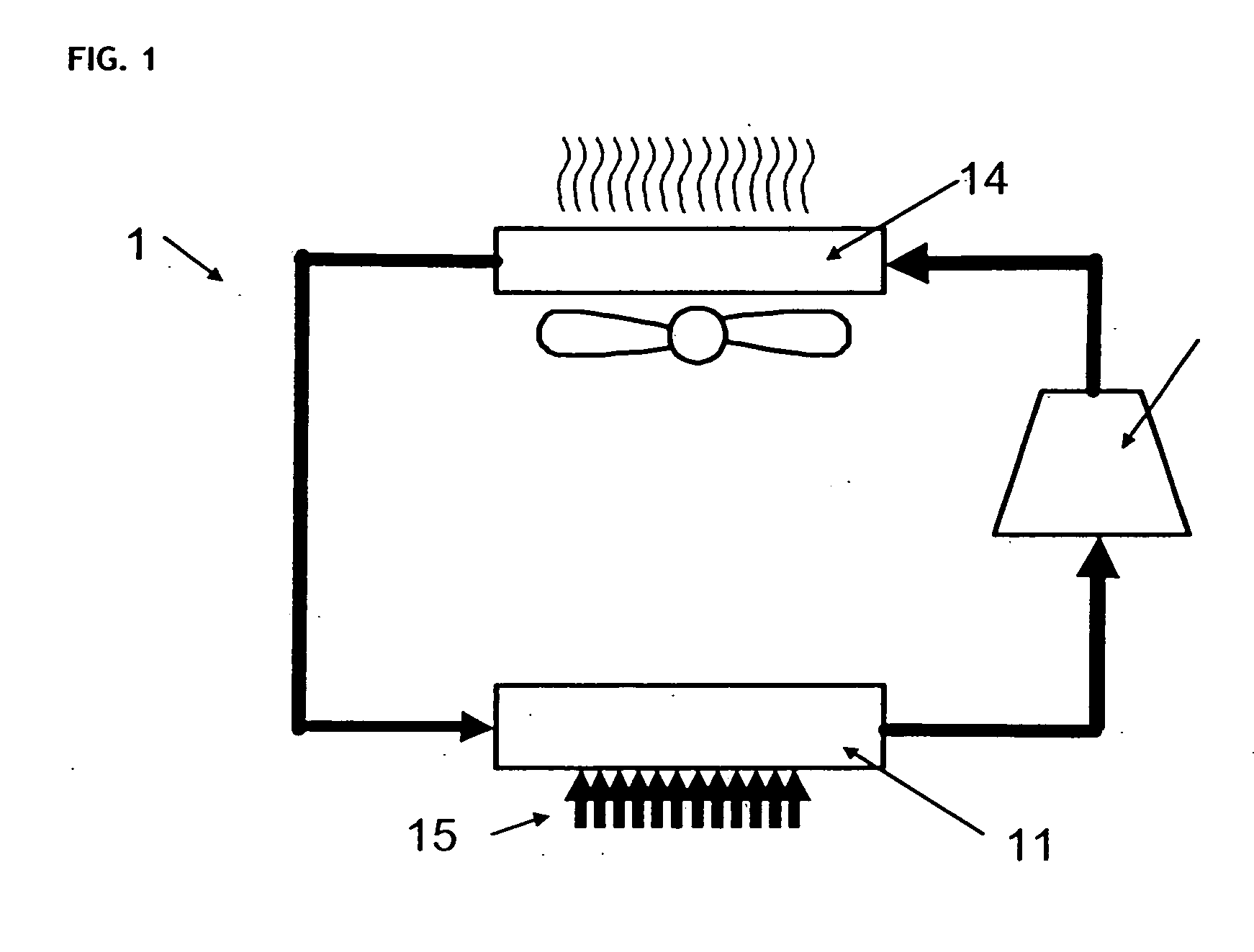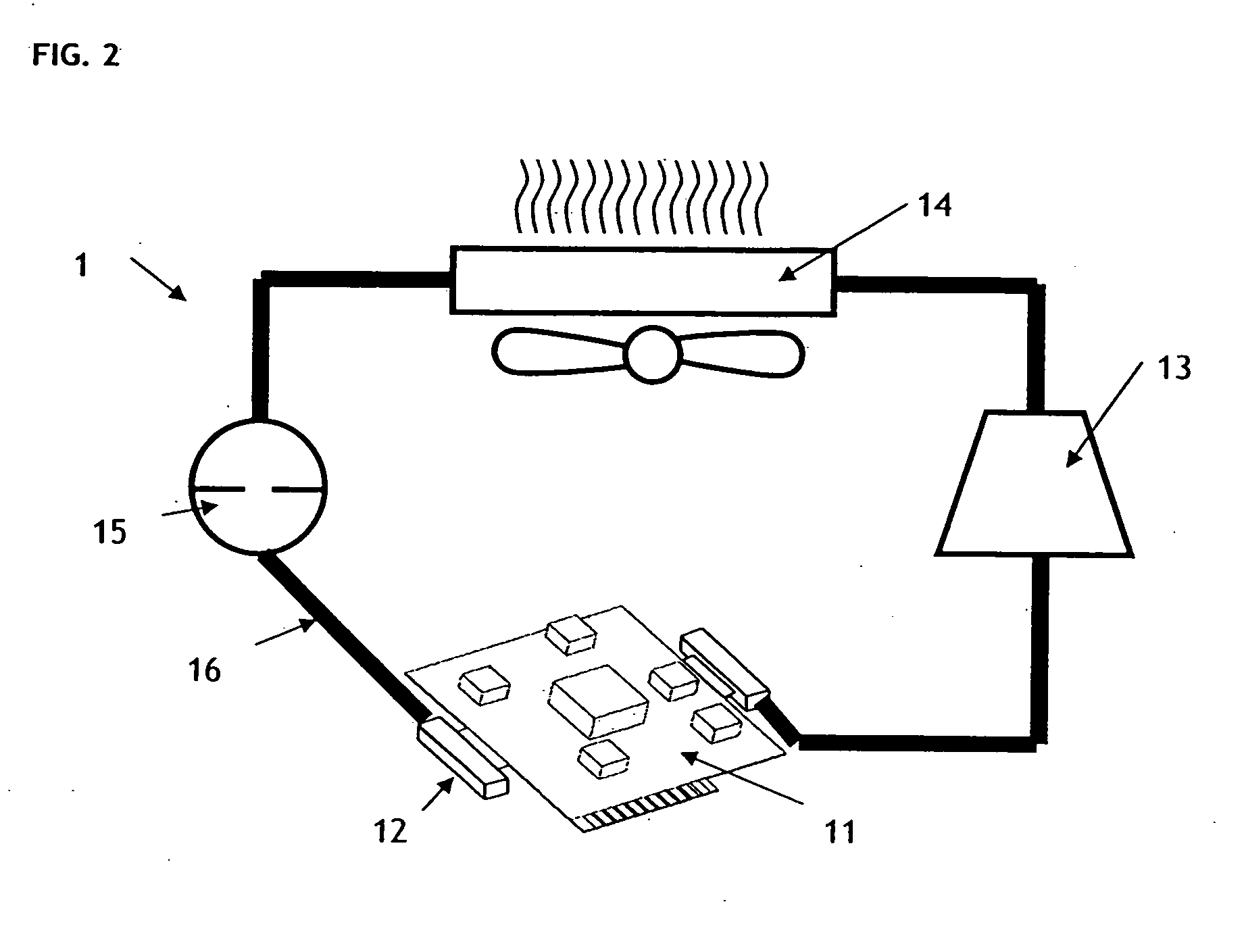Method and apparatus for electronics cooling
a technology for electronics and cooling, applied in lighting and heating apparatus, semiconductor/solid-state device details, laminated elements, etc., can solve the problems of inefficient refrigeration methods, more input power than can be dissipated, and heat emitted by these circuits can overwhelm the cooling capacity of conventional air-blown heat sinks
- Summary
- Abstract
- Description
- Claims
- Application Information
AI Technical Summary
Benefits of technology
Problems solved by technology
Method used
Image
Examples
example 3
[0057] A heat accepting heat exchanger measuring 100×100 millimeters square and 0.011 inches in thickness is constructed with an array of 80 microchannels running through the center of the lamination, from one side to the opposite side, and laminated into a printed circuit board configuration of layers with FR-4 epoxy insulation. The channels measured nominally 200 microns wide by 100 microns deep and were separated by a distance of nominally 100 microns. In the center of the board was a heat source measuring 27×27 millimeters. The heat accepting heat exchanger was separated from direct contact with the heat source by the distance of one layer of FR-4 but was in indirect contact with the heat source through a square array of 81 thermal vias.
[0058] Heat emitted by the heater was from 15-55 watts. Carbon dioxide from a pressurized tank was directed into this heat accepting heat exchanger by a fluid driver at 84 bar and 37° C. inlet temperature, and at flow rates ranging between 0.18 ...
PUM
 Login to View More
Login to View More Abstract
Description
Claims
Application Information
 Login to View More
Login to View More - R&D
- Intellectual Property
- Life Sciences
- Materials
- Tech Scout
- Unparalleled Data Quality
- Higher Quality Content
- 60% Fewer Hallucinations
Browse by: Latest US Patents, China's latest patents, Technical Efficacy Thesaurus, Application Domain, Technology Topic, Popular Technical Reports.
© 2025 PatSnap. All rights reserved.Legal|Privacy policy|Modern Slavery Act Transparency Statement|Sitemap|About US| Contact US: help@patsnap.com



